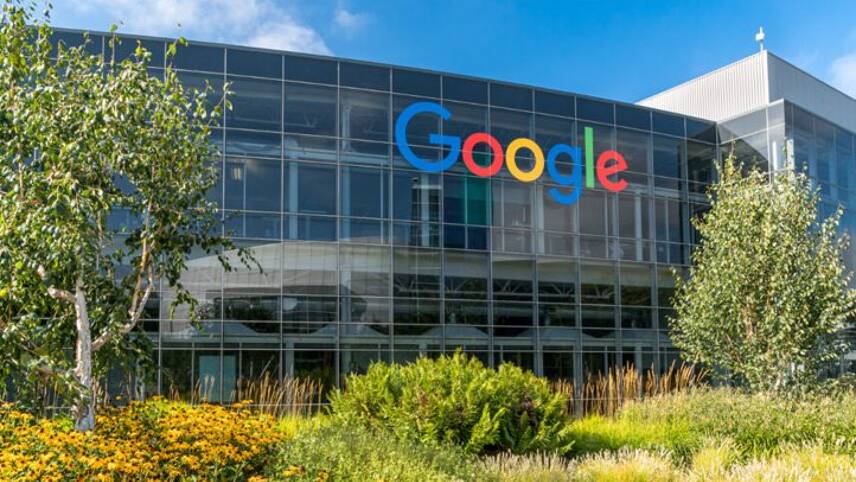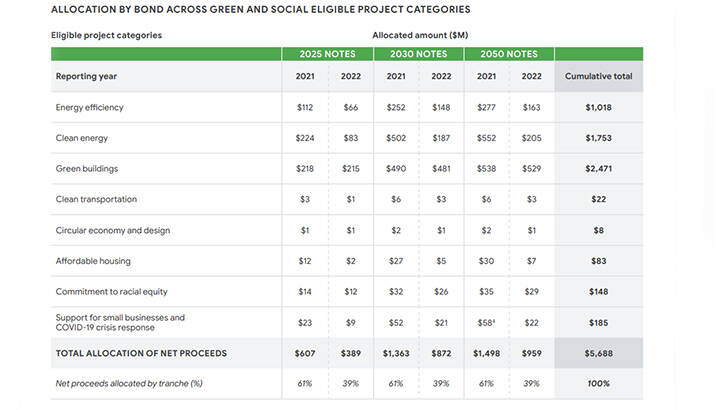Register for free and continue reading
Join our growing army of changemakers and get unlimited access to our premium content

Google's artificial intelligence (AI) technology will recognise oil and gas infrastructure in satellite imagery.
Google has always been an organisation that has pushed itself to the forefront of the sustainability movement by setting stretching and ambitious targets.
In the last few years, the company has set a net-zero target for 2030 and a goal to operate all of its data centres and campuses on 100% carbon-free energy. The company has been matching its annual energy consumption with renewable energy purchases since 2017 but claims that shifting to direct sourcing will be “far more challenging” and a “sustainability moonshot.”.
Accessing these moonshots requires capital and a willingness to harness innovation. In 2020, the company’s parent owner Alphabet issued a $5.75bn sustainability bond, which was the largest sustainability or green bond issuance by any company at the time.
This week, Google has confirmed that 100% of the net proceeds raised from the sustainability bond have been allocated.
Google states that each project meets at least one of the eight eligibility criteria that it has defined using an internal framework that is aligned with the Green Bond Principles, the Social Bond Principles, and the Sustainability Bond Guideline.
The eight strands of eligibility cover energy efficiency, clean energy, green buildings, transport, circular economy, affordable housing, commitment to racial equality and supporting SMEs during the pandemic.
Energy efficiency
One of the largest pillars of the sustainability bond framework is clean energy. Google has confirmed that just over $1bn has been allocated to “the expansion and improvement of energy-efficient facilities and infrastructure”. This includes financing for upgrades at four data centres that now see those facilities use about six times less overhead energy than the industry average.
Google has also allocated $1.75bn on purchase agreements for renewable energy. A total of 45 PPAs have been issued across three continents with a combined capacity of approximately 5.3GW, including a first-of-its-kind agreement in Europe with ENGIE to power 80% of the company’s German operations with zero-carbon energy on an hourly basis.
Google has matched 100% of its global electricity use with renewable electricity purchases each year since 2017. It is now working to increase onsite generation and Power Purchase Agreements (PPAs) to minimise the use of tariffs where possible, as this approach guarantees additionality. Google is also working to launch a digital tool enabling the tracking of renewable electricity generation and consumption in real-time.
The company estimates that the PPAs will avoid nearly 25 million metric tons of carbon dioxide equivalent (tCO2 e) emissions.
“We believe that these investments benefit our communities, employees, and stakeholders, and they’re an important part of fulfilling Google’s mission and goal of creating value over the long term,” Google states in its report.
“Our Sustainability Bond helps us operate our business in an environmentally and socially responsible way. Our ultimate goal is to enable everyone— businesses, investors, policymakers, and individuals—to create and live in a more sustainable world. We continue to lead and encourage others to join us in improving the health of our communities and our planet.”
Best of the rest
On buildings, Google allocated almost $2.5bn to the design, construction, and improvement of 14 buildings, including seven new building projects such as the landmark projects in London and Munich. The company states it now has almost 9 million square feet of buildings that are on track to achieve LEED Platinum certification.
As for transport, Google has allocated $22m on initiatives for the electrification of its fleet vehicles, including charging stations. Investments have also been made in a bike programme. Google states the investments have supported almost 4,000 EV charging points across the US and Canada.
Closed-loop initiatives have received a small allocation from the sustainability bond. In total, $8m was provided to seven circular economy initiatives, the most notable being a new software system to track and reduce pre-consumer food waste. The software, utilised in Google’s kitchens has prevented more than 1.4m kilograms of food from being wasted.
Google also spent $83m on 21 affordable housing projects that will likely create more than 3,000 units for people to stay in.
The company has ramped up investments into racial equity initiatives. Since the launch of the bond, almost $148m has been allocated across 15 projects in this area that will provide 3,700 loans to small businesses that are focused on racial equality. These included supporting black business owners through the Opportunity Finance Network (OFN), and creators and artists through the #YouTubeBlack Voices Fund.
Finally, on small businesses, Google has allocated $185m in what it calls “contractual commitments” to provide loans to SMEs. Google claims this commitment will enable 46,950 loans to be closed to SMEs.
Additionally, when the pandemic hit in 2020, Google announced a $200m investment part as part of a wider $800m SME support package.



Please login or Register to leave a comment.